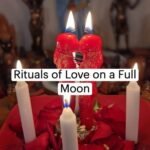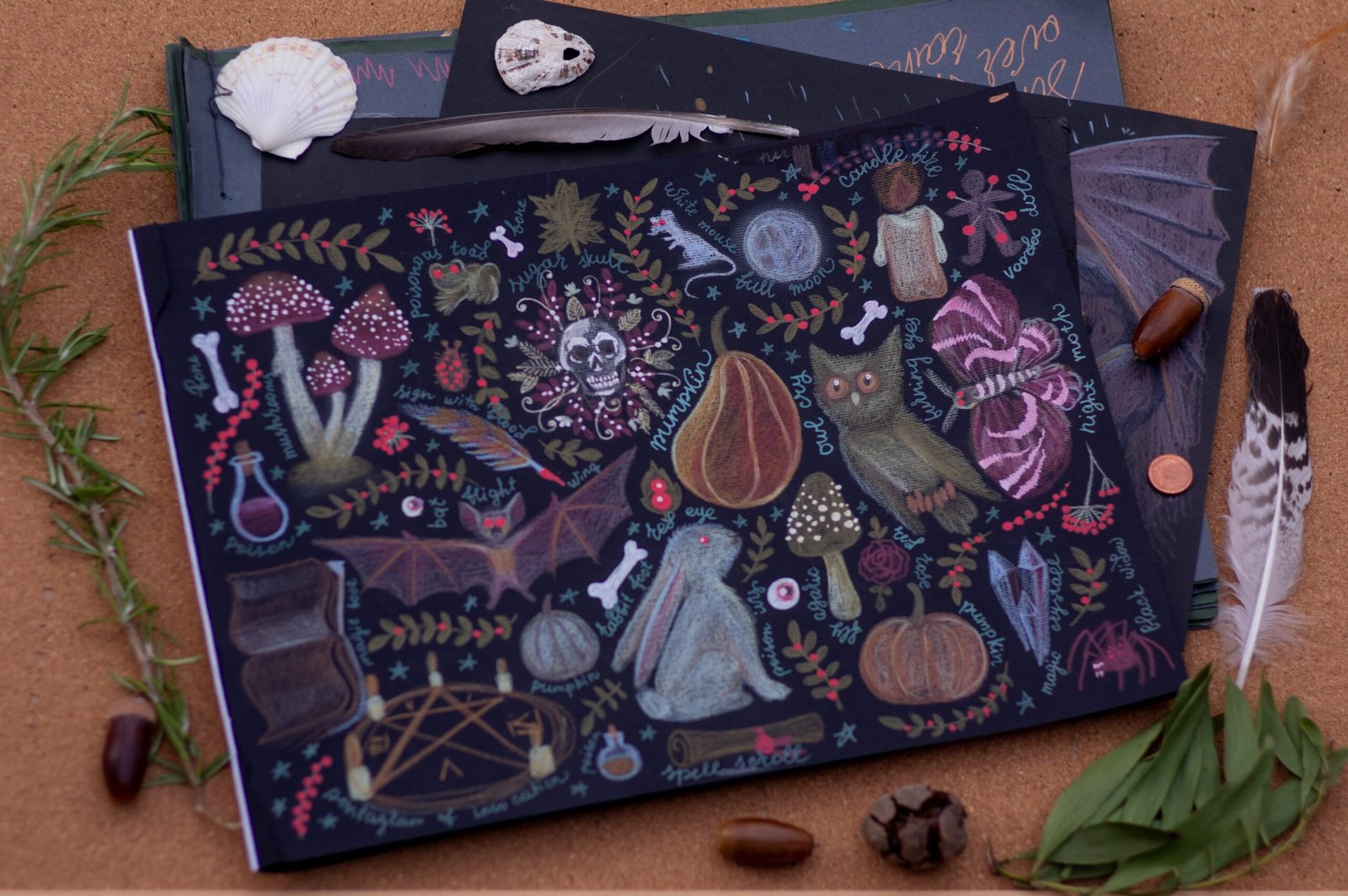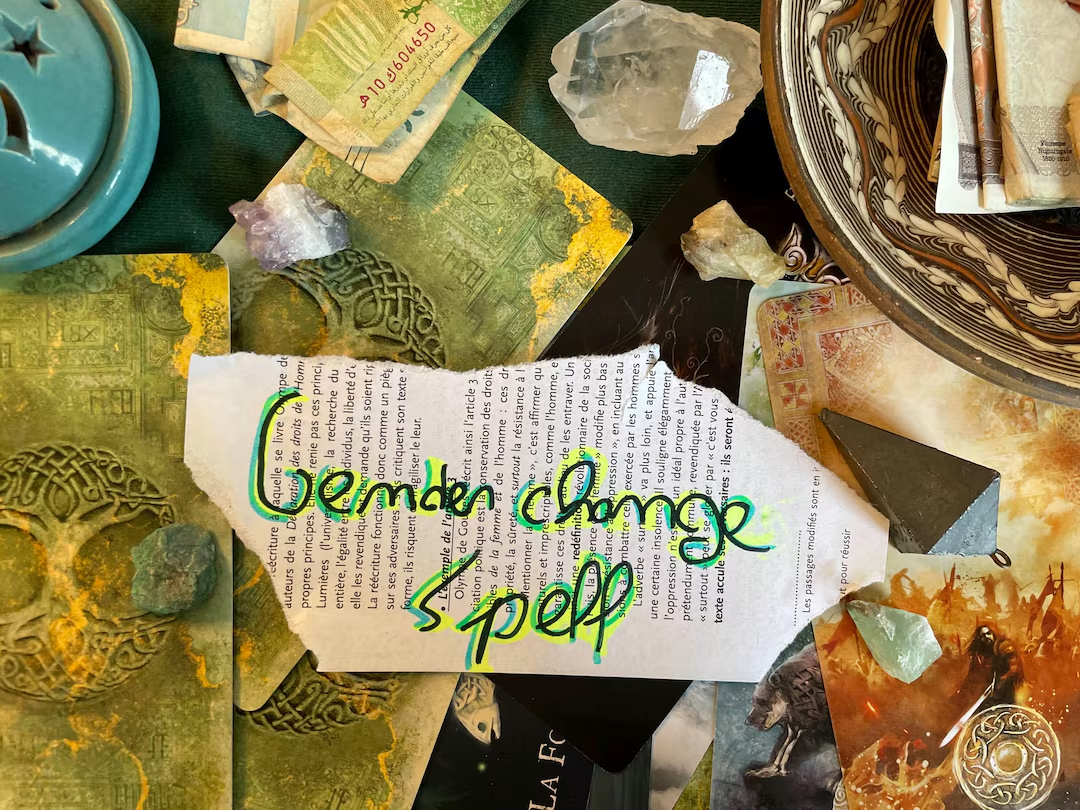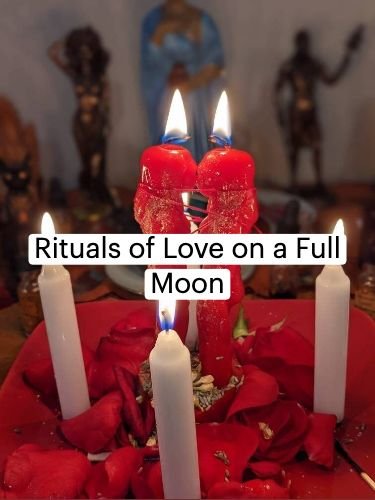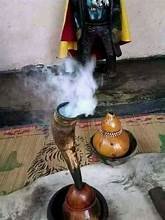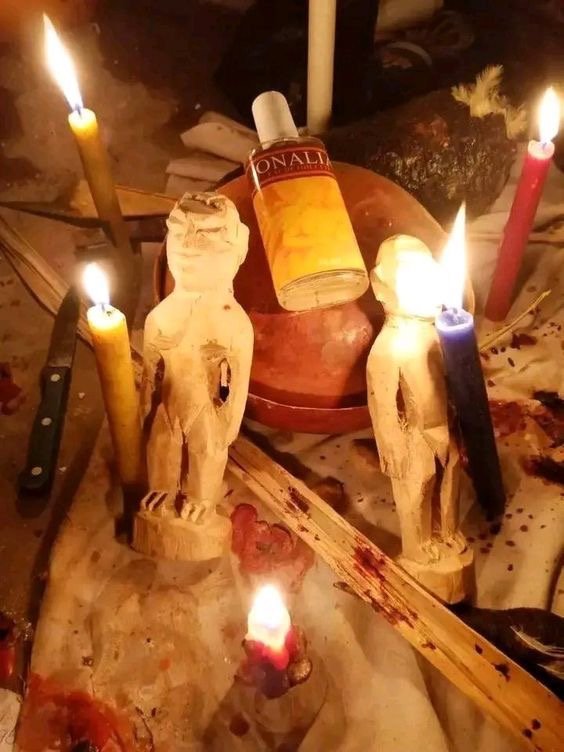Introduction to Voodoo Spells
Voodoo spells form an integral part of the spiritual practice known as Vodou, which originates primarily from the African traditions brought to the Americas by enslaved peoples, particularly in Haiti. These spells and rituals are deeply rooted in the cultural, spiritual, and historical contexts of the communities that practice them. Voodoo is often misunderstood and misrepresented, leading to numerous misconceptions that detract from its rich cultural heritage.
At its core, Voodoo is a spiritual belief system that emphasizes the connection between the earthly and spiritual realms. Voodoo spells serve a variety of purposes, including healing, protection, love, and prosperity. Practitioners may invoke specific spirits, known as lwa or loas, who play significant roles in both everyday life and in the spiritual realm. The spells aim to channel these spirits’ energies, creating a bridge that allows for interaction and assistance in various aspects of life.
Voodoo’s significance extends beyond the individual as it embodies communal values and traditions. Each spell is often tailored to meet the unique needs of a practitioner, reflecting their intentions and desires. These spells are typically steeped in the use of symbolic objects, herbs, and rituals, which hold considerable meaning within the Vodou practice. This intricate symbolism can provide practitioners with a sense of empowerment and control over their life circumstances.
Common misconceptions about Voodoo often revolve around the notion of malevolence, such as the idea of “voodoo dolls” targeting victims. However, this represents only a fraction of the vast and diverse practices within Vodou. Understanding Voodoo spells requires recognizing their cultural significance and the devotion of practitioners to their beliefs. Consequently, Voodoo remains a powerful and transformative spiritual practice for many individuals, embodying a blend of history, spirituality, and community.
Types of Voodoo Spells
Voodoo, an intricate belief system that originates from West African religious traditions, encompasses a wide range of practices designed to harness supernatural forces. Among these practices, Voodoo spells are categorized into several types, each serving a specific purpose to address different aspects of life. Here, we explore some of the predominant categories of Voodoo spells, helping to illuminate their unique characteristics and applications.
One of the most commonly sought after types of Voodoo spells is the love spell. These spells are intended to enhance attraction between individuals, mend broken relationships, or even ignite passion in stagnant unions. Practitioners often use specific herbs, oils, and rituals that embody the energy of love, focusing on emotional bonds and connectedness. They hold the belief that properly executed love spells can invoke powerful sentiments and bring about desired romantic outcomes.
Protection spells are another vital category within Voodoo practices. These spells serve to shield individuals from negative energies, harmful influences, or malicious intentions. Often utilized when facing uncertainty or adversity, protection spells may involve charms or talismans designed to safeguard an individual or their property. Practitioners engage in deep rituals that channel protective spirits and energies, reinforcing the idea that safety and security are fundamental aspects of human existence.
Money spells are also prevalent among Voodoo practitioners, aimed at attracting wealth, prosperity, or financial stability. These spells can be crafted to enhance one’s opportunities in business or improve financial luck. By harnessing the forces of abundance, individuals may find themselves opening doors to new avenues of income or enhanced economic circumstances. Alongside their intentions, practitioners often perform rituals employing specific symbols associated with wealth, further aligning their energies with positive financial outcomes.
Lastly, health spells are integral to Voodoo practices. These spells focus on physical and mental well-being, invoking healing energies or protection from illness. Practitioners may call upon spiritual entities associated with health, seeking their aid for recovery and wellness. Ultimately, the various types of Voodoo spells reflect a holistic approach to life, addressing the diverse needs of individuals through the transformative power of intention and ritual.
Common Ingredients Used in Voodoo Spells
Voodoo spells, rich in tradition and cultural significance, often rely on a variety of ingredients that serve specific purposes within the rituals. Understanding these components can provide insight into the ritualistic aspects of Voodoo and how practitioners utilize various elements to manifest their intentions. Among the most commonly used ingredients are herbs, candles, powders, and oils.
Herbs play a central role in Voodoo spells, each carrying unique properties believed to influence magical outcomes. For instance, basil is often associated with protection, while rosemary is thought to enhance clarity and spiritual awareness. Additionally, herbs such as sage are frequently used for cleansing, allowing practitioners to purify the space before conducting their rituals. The careful selection of herbs not only reflects the practitioner’s intent but also connects them to the spiritual energies surrounding the spell.
Candles are another essential ingredient in Voodoo practices. They are often infused with specific colors that symbolize different energies and intentions. For example, green candles are linked to prosperity and growth, while black candles are used for banishing negativity. The act of lighting a candle during a spell can signify the activation of energy, helping to direct the practitioner’s focus towards their desired outcome.
Powders, too, have their unique significance in Voodoo. Typically made from ground herbs, minerals, or other natural substances, they can enhance spells or be used for specific purposes, such as protection or attraction. Powders may be sprinkled around the ritual space or incorporated into charms and amulets.
Finally, oils are often employed for anointing candles, objects, or the practitioner themselves. Each oil has its unique properties, often carrying associations with various deities or spiritual forces. For example, patchouli oil is commonly used in love spells, while frankincense oil is favored for its protective qualities.
The thoughtful integration of these ingredients within Voodoo spells illustrates the depth and complexity of this spiritual practice, reflecting how practitioners harness the natural world’s power to achieve their goals.
Step-by-Step Guide to Performing Basic Voodoo Spells
Performing basic Voodoo spells involves a thoughtful approach, respect for the tradition, and proper preparation. To begin, it is essential to gather the necessary materials. Common supplies include candles (preferably in colors that correspond to your intention), herbs, oils, and personal items such as photographs or written petitions. Ensure that these items resonate with the intention behind your spell, as energy alignment is crucial for the spell’s effectiveness.
Before you cast a spell, find a quiet space where you can concentrate without distractions. Cleanse the area by burning sage or using saltwater to remove any negative energies and create a sacred space. You may wish to set an altar with the collected items, enhancing the environment’s spiritual significance. Meditation is also beneficial at this stage; focusing your mind on the desired outcome will help to clarify your intentions.
With your space prepared, the next step is to set your intent. This involves articulating what you wish to manifest clearly. You can write your intention down, repeating it aloud to reinforce your commitment. As Voodoo practice emphasizes the connection to spirits and ancestors, consider invoking relevant deities or spirits through prayers or offerings, asking for their guidance and support.
When ready, light your candles and begin the physical act of casting the spell. This may involve chanting specific incantations, placing herbs in a designated area, or performing symbolic gestures. Each action should be performed mindfully, maintaining focus on your intention throughout the process. After completion, allow the candles to burn down fully, symbolizing the manifestation of your desire.
Finally, once the spell is complete, remember to express gratitude both to the elements involved and to any energies or spirits you invoked. Respecting the tradition and maintaining a humble approach is vital in Voodoo practice, ensuring a positive experience for both the practitioner and their spiritual journey.
Safety and Ethical Considerations in Voodoo Spells
Engaging in Voodoo spells requires a profound understanding of the ethical implications and potential consequences associated with such practices. Voodoo, as a rich and complex spiritual tradition, emphasizes the need for respect towards the forces and entities involved. Practitioners must navigate the dual responsibility of honoring the cultural significance of Voodoo while also considering the well-being of others.
A primary ethical consideration is the principle of harm. Voodoo practitioners should adhere to the ethical guideline of “Do no harm.” This means that one should avoid spells intended to manipulate, control, or harm others, as these actions can lead to severe repercussions, not only for the target but also for the caster. Engaging in harmful practices can invite negative energy or backlash, creating discord in one’s life. It is also crucial to be aware of one’s intent, ensuring it aligns with positive outcomes and respects the free will of others.
Furthermore, responsible spell-casting involves informed consent and cultural respect. Many Voodoo practitioners emphasize the significance of consent, especially when working with someone else’s energy. Consulting and discussing intentions with the individuals involved reinforces a sense of mutual respect and understanding. Additionally, practitioners should have a thorough understanding of the cultural context of Voodoo spells, appreciating their historical roots and avoiding appropriation of the tradition.
In conclusion, practicing Voodoo spells with a focus on safety and ethics is fundamental to maintaining integrity within the tradition. By adhering to the principles of non-harm and respect, practitioners can foster a positive spiritual practice that honors both the art of Voodoo and the communities from which it originates. This commitment not only enhances personal experience but contributes to a broader understanding of the powerful energies that Voodoo embodies.
Famous Voodoo Spells and Their Stories
The rich tapestry of Voodoo culture encompasses numerous spells, each steeped in history and compelling narratives that hint at the immense impact of these practices. One of the most renowned Voodoo spells is the “Bacchanal,” a ritual that was traditionally used to invoke the spirits during ceremonies celebrating the harvest. This spell not only served practical purposes related to agriculture but also played a significant role in community bonding, reinforcing social ties among practitioners.
Another prominent example is the “Love Binding” spell, aimed at fostering deep romantic connections. Historically, this spell traces back to the early days of Voodoo, where love and relationship intricacies were paramount in the lives of practitioners. The stories highlight how individuals, often desperate for connection, sought the help of Voodoo practitioners to mend broken relationships or to ignite passion within floundering unions. The potency of this spell illustrates Voodoo’s nuanced understanding of human emotions.
Similarly, the “Revenge” spell stands out for its darker connotations. This particular spell has been used throughout history to regain a sense of balance when practitioners felt wronged. Narratives of individuals seeking justice through Voodoo, particularly in the face of betrayal or wrongdoing, showcase the complex moral landscape navigated by followers. These stories often culminate in lessons about the consequences of vengeance, reflecting the broader philosophical themes embedded within Voodoo traditions.
Each of these famous spells not only represents the power of Voodoo practices but also embodies the cultural significance that continues to resonate with many today. They serve as a reminder of how Voodoo, with its rich stories, has provided individuals with hope, justice, and love across generations, encapsulating the profound impact of this spiritual practice in transforming lives.
The Role of Voodoo Priests and Priestesses
Voodoo, a spiritual practice with roots in West African traditions, relies heavily on the guidance and expertise of its practitioners, notably Voodoo priests and priestesses. These individuals serve as essential intermediaries between the spiritual and physical realms, wielding knowledge that has been passed down through generations. Their training often begins at a young age, typically under the tutelage of established practitioners. This training encompasses a range of disciplines, including herbalism, divination, and the history of Voodoo, as well as the intricate rituals that define the practice.
Voodoo priests and priestesses, often referred to as houngans (male) or mambos (female), are not only practitioners but also spiritual leaders within their communities. They are entrusted with the responsibility of performing rituals, casting spells, and providing spiritual guidance to their followers. These rituals involve invoking the spirits or lwa, who play a significant role in influencing the lives of individuals seeking help. As such, the ability to connect with these spirits and channel their energies is a critical skill for any Voodoo practitioner. This connection strengthens the bond between the priest or priestess and their community, as they navigate spiritual challenges together.
Moreover, Voodoo priests and priestesses are pivotal in maintaining the sense of community, which is a cornerstone of Voodoo culture. They organize gatherings, facilitate healing ceremonies, and support individuals in their spiritual journeys. In these communal settings, followers can share experiences, seek counsel, and engage in collective spell-casting, thereby reinforcing their bonds both spiritually and socially. This emphasis on community is not merely a ritualistic component but a vital aspect that strengthens the practice of Voodoo spells, ensuring that individuals do not face their spiritual challenges alone.
Modern Adaptations of Voodoo Spells
In recent years, Voodoo spells have experienced a significant transformation, adapting to contemporary practices influenced by pop culture and the internet. These adaptations illustrate how this spiritual tradition has integrated itself into modern life while still honoring its traditional roots. The evolution of Voodoo reflects a broader trend in which ancient practices are reimagined and made more accessible to a diverse audience.
One of the most notable changes has been the rise of online communities dedicated to Voodoo and its practices. Social media platforms, blogs, and forums have created spaces where practitioners share rituals, advice, and personal experiences. This digital presence also contributes to the demystification of Voodoo, allowing newcomers to explore the faith without fear or misinformation. Many individuals now seek guidance from these online resources to incorporate Voodoo spells for various purposes, such as love, protection, and prosperity, into their lives.
Furthermore, popular culture has played a critical role in shaping the perception and practice of Voodoo. Films, television shows, and literature often depict Voodoo in stylized and dramatized ways, leading to both interest and misconception. While many portrayals are both sensationalized and inaccurate, they have simultaneously sparked curiosity about the authentic practices associated with Voodoo. As a result, some modern practitioners have begun to blend elements of Voodoo with other spiritual disciplines, creating hybrid practices that resonate with contemporary ideologies.
Despite these adaptations, it remains essential for modern practitioners to acknowledge the cultural significance and historical context of Voodoo. The foundational belief systems and traditional rituals still hold value, and respectful engagement with these aspects ensures the integrity of the practice. The challenge lies in navigating the balance between modernization and respect for the rich legacy of Voodoo spells, as practitioners strive to make the practice meaningful in today’s world.
Conclusion: Embracing Voodoo Spells Responsibly
In our exploration of Voodoo spells, we have delved into the historical significance, cultural richness, and the intricate practices that characterize this belief system. Voodoo, often misunderstood, is not simply a collection of magical rites; it is a profound spiritual path deeply rooted in community values, respect for ancestors, and the interconnectedness of life. As we conclude this guide, it is vital to remember that engaging with Voodoo spells requires a thoughtful and respectful approach.
Understanding the ethical dimensions of Voodoo is crucial. Practitioners are urged to prioritize the well-being of all involved, aligning their intentions with positive outcomes and respecting the free will of others. When working with Voodoo spells, mindfulness about the potential consequences of one’s actions cannot be overstated. This awareness fosters not only a deeper connection to the practice but helps ensure that spells are employed in ways that promote harmony and healing rather than conflict.
As you consider engaging with Voodoo spells, it is beneficial to approach this ancient tradition with both curiosity and reverence. Learning about the various aspects of Voodoo, including the significance of rituals, the use of symbolic objects, and the importance of faith, can enrich your perspective. Moreover, immersing oneself in the cultural context surrounding Voodoo can lead to a greater appreciation of its depth and complexity.
In summary, embracing Voodoo spells responsibly involves an open mind and a respectful heart. By recognizing the cultural heritage and ethical responsibilities tied to these practices, individuals can embark on a transformative journey that honors the spirit of Voodoo while fostering personal growth and positive change.





